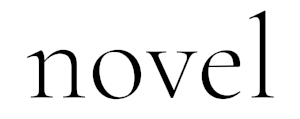Why Downtime is Essential for Innovation
Downtime is the opposite of everything I learned as a child. Both my parents were raised on farms; we are a family of doers. “If there is time to lean, there is time to clean” is something I would have heard growing up. When my dad made a chore chart, my siblings ignored it, but those gold stars meant everything to me. Accomplishing things was one way I earned affection from my parents, and while this might have been a useful strategy as a kid, as an adult I’ve become more interested in the value of downtime.
I’ve heard over and over again that downtime is essential to creative pursuits, learning new skills and strategic thinking, but as a busy entrepreneur it’s sometimes hard to settle into the present after I’ve been thinking, discussing and planning all day. And yet I know that taking a walk alone, watching the birds outside my window or playing an instrument can help me get centered and create space for new ideas.
One thing I’ve learned through meditation in particular is that it’s hard to find the time but also the discipline to sit in silence — because that’s when unprocessed thoughts and feelings tend to surface. What I’ve noticed over the last few years is that the more I meditate, the more space I give to those unprocessed thoughts and feelings, which, in turn, start to fade over time. One of my meditation teachers calls them “energy pockets,” and visualizing little pockets of energy becoming fainter and fainter has been useful in recognizing the benefits of a regular practice.
But what about integration into my work life? Work is about doing, right? All of my inboxes, feeds and project management lists say so, however, tech startups have shown us the value in ping pong rooms for play and nap pods for breaks. Companies such as Google and Facebook work with everyone from psychologists to design experts to create the perfect environment for creativity, collaboration and joy. They know that team members who are happy, community-oriented and relaxed will be better contributors and have better ideas.
One of the luxuries of being a tech giant is that you have the resources to research the best ways to maximize human potential, and don’t just exist in survival mode. But what about smaller organizations? Is there something we can learn from the best practices that Google and Facebook are developing?
In the information era, ideas are queen. If space and stillness are essential to creating, as well as thinking and acting with clarity, how can I strengthen my muscle of non-doing even in the workplace? Here are a few things I’m experimenting with right now.
Regular meditation once or twice a day. I started with five minutes every morning and continued for a year until I had a regular practice. The next year, I did a minimum of seven minutes daily. Now my minimum is 20 minutes. A few months ago I started doing an evening practice, too, and I’m still trying to keep that one going. A few meditation apps I like are Headspace, Insight Timer and Waking Up.
Breaks throughout the day. Throughout the work day I’ve begun to introduce more and more pauses. I try to pause for a minimum of one minute in between projects, tasks or meetings. I set my timer and breathe, or I step outside and take a short walk. A few moments of calm and quiet throughout the day ground me.
Return to play. A few times a week I try and do at least 30 minutes of sober, quiet play. Music can be playing, but I don’t listen to a podcast or an audiobook. I’ve experimented with a lot of different things: drawing, writing poetry, knitting, coloring. You have to find what works for you.
Downtime used to be a scary word for me; busyness made me feel important and in control. As time goes on it gets easier, but I’m still figuring out how to incorporate play in my work day and how to be more consistent with my evening practice. What I do know is that this tender place of stillness is where I want to be.

